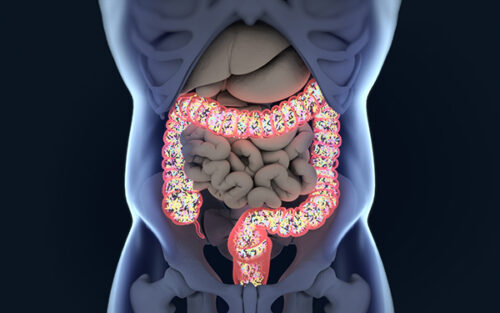The Myth of Moderation: Do All Foods Really Fit?
Updated December 22, 2019
By Jeff Novick, MS, RDN
You know what they say when it comes to what to eat, “everything in moderation.” Whether it is chocolate, wine, red meat, dessert, etc., nothing is bad in and of itself as long as we just don’t consume too much of it. But how do we define “too much” and how do we know if we have surpassed this?
Let’s start at the beginning…
Our current concept of “everything in moderation” comes from ancient Greece, where at the temple of Apollo at Delphi there was the inscription, “Meden Agan” or “Nothing in Excess.” From this, we got the concept of doing something “in moderation” which means, not doing it excessively. Therefore, someone who moderates their food consumption may choose to eat food from all food groups but will limit their intake of those foods that may cause deleterious effects.
So, how are we doing in this area?
The items we know that are causing harm to Americans right now are the excess consumption of added sugars, sodium, saturated fat, refined grains, and empty calories. So, how much does the average American consume of these?
Added Sugars:
70% have intakes above the limit;
Sodium:
89% have intakes above the upper limit;
Saturated Fats:
71% have intakes above the upper limit;
Refined Grains:
90% have intakes above the limit;
Empty Calories:
80% have intakes above the limit.
Therefore, these are five items we can no longer consume “in moderation” as their current level of consumption is far beyond the level we know to cause harm. The only solution is a dramatic reduction in the amounts we consume of these items. Then, and only then, perhaps we can again, consume these things in moderation.
However, there is also a flip side to the saying “everything in moderation.” There are items that we know are very beneficial, that we should be consuming a certain amount of in order to gain their benefit. These are fruits, vegetables, whole grains and beans and peas. So, how much does the average American consume of these?
Fruits:
75% have intakes below the recommendation;
Vegetables:
87% have intakes below the recommendation;
Whole Grains:
95% have intakes below the recommendation;
Beans and Peas:
80% have intakes below the recommendation.
Therefore, these are also items we can no longer consume in moderation as their current level of consumption is far below the level we know to be beneficial. The only solution is a dramatic increase in the amounts we consume of these items.
In addition, over two-thirds of Americans are currently overweight and over one-third are obese. A new study this week from the Harvard School of Public Health said that half of the U.S. population will be obese by 2030, and a quarter will have severe obesity. We did not get this way by consuming “all things in moderation.” We got this way by consuming many things, and many of the wrong things, in excess — great excess. Since 1970, the average American consumes ~25 percent more calories with most of these calories coming from added fats and oils (48%), refined grains (34%) and added sugars (7%).
Even the saying from the American Dietetic Association, “all foods fit,” has been taken out of context. The original saying is not “all foods fit,” but, “all foods can fit into a healthful diet if consumed in moderation with appropriate portion size and combined with regular physical activity.”
As we see, Americans are not consuming foods in moderation nor are we engaged in regular activity. Approximately 80 percent of Americans do not even meet the minimum recommendations for activity/exercise. This is why the current concepts of “everything in moderation” and “all foods fit” for the average American today is a myth.
Moderation is no longer an option in regard to calories, or in regard to the foods we know can be harmful, or in regard to the foods we know to be beneficial. We are so far from what constitutes healthy in America, that we have much work to do to get back to where we can once again discuss moderation. Rationalizing the over consumption of harmful foods, or the minimal consumption of beneficial foods, with a saying that does not apply to our situation, will not help us.
We need to focus on increasing our intake of fruits, vegetables, whole grains and beans and peas, just to reach the recommendations. In addition, we have to cut our consumption of added sugars, sodium, saturated fat, refined grains and empty calories just to get down to the upper level/recommended limits.
Moderation will not help us accomplish this. We need a dramatic shift in our understanding of our current situation and the solution we take.
DATA SOURCES: What We Eat in America, NHANES 2007-2010
Recommended Articles

Holiday Meal Planning & Recipes

Cholesterol – When and How to Treat It






